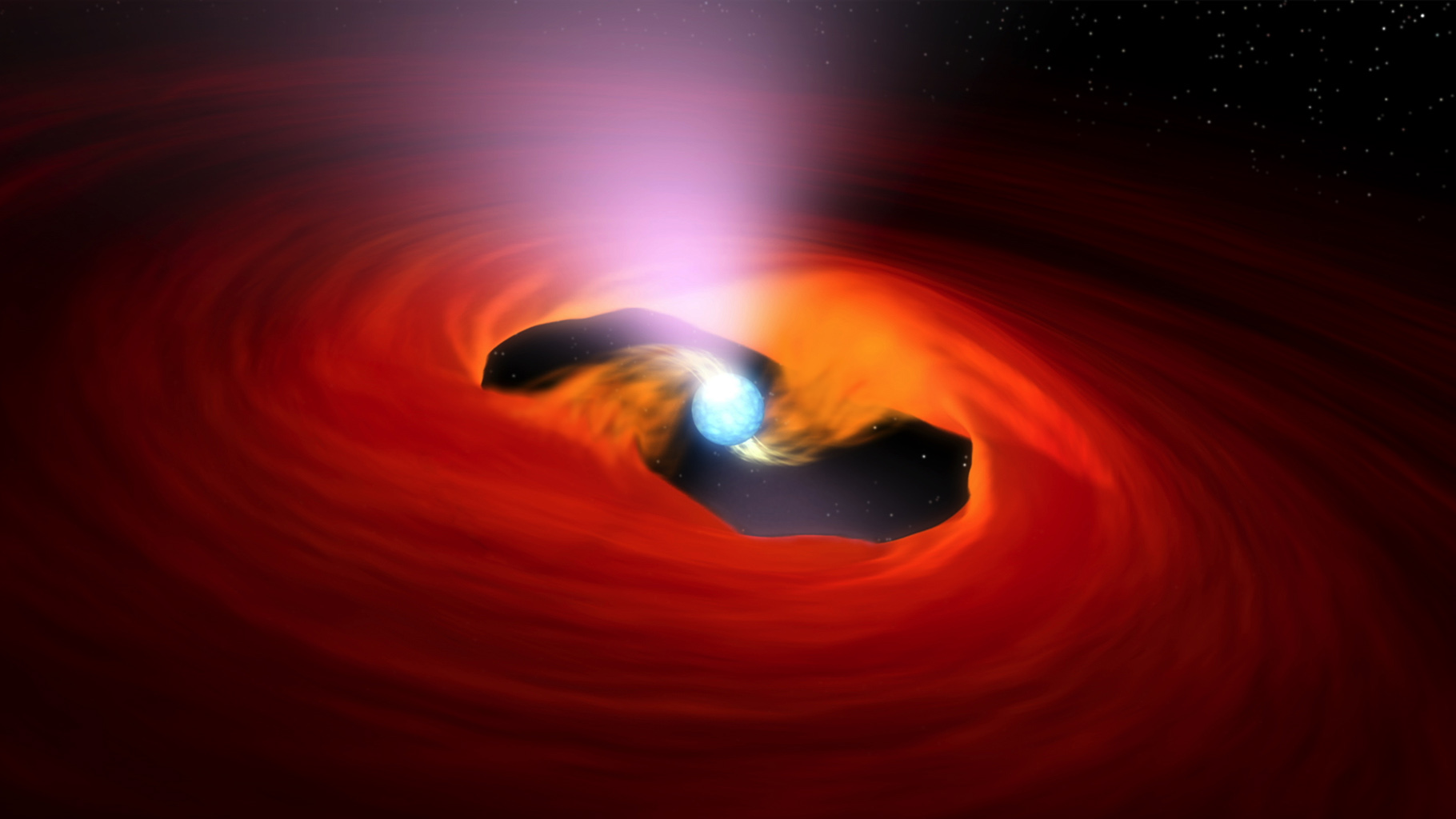A bizarre speed-demon star has winds powering a cloud of gas called 'Potaroo'
The pulsar nebula has been named "Potoroo", after a small Australian marsupial.

Astronomers have discovered a new rapidly spinning star that races through the universe at millions of miles per hour and spins 14 times a second.
The pulsar, the rapidly spinning core of a dead star, also blows a powerful wind of particles, creating a so-called "pulsar wind nebula". The team made the discovery using Australia's Square Kilometer Array Pathfinder (ASKAP) and the Parkes radio telescope, in conjunction with the South African MeerKAT radio telescope.
The nebula (gas cloud) is around 33,000 light-years from Earth, and appears to be around 69 light-years wide when viewed in radio waves, though it is only a tenth of this size when viewed in X-rays.
Despite its impressive size, 46 times as wide as the solar system, the team behind the discovery has named the new pulsar wind nebula "Potoroo", after a tiny hopping marsupial native to Australia.
Related: 300 gamma-ray-blasting neutron stars found in massive haul — and some are 'spider pulsars'
Like all neutron stars, the pulsar that is powering Potoroo — designated PSR J1638–4713 — was born when a massive star ran out of the fuel for nuclear fusion at its core. This ended that outward flow of energy that had supported the star against the inward push of its own gravity for millions or billions of years.
As the core of the star, with a mass of between one and two times the mass of the sun, collapsed to a width of around 12 miles (20 kilometers). That created matter so dense a tablespoon of it would weigh around 1 billion tons on Earth. Meanwhile, the star's outer layers were ripped away by a massive supernova explosion.
This leaves a rapidly spinning, highly magnetic neutron star that blasts out radiation that periodically sweeps through space like a cosmic lighthouse surrounded by a gradually spreading shell of cooling supernova-ejected matter.
Breaking space news, the latest updates on rocket launches, skywatching events and more!
Wind from the pulsar blows charged particles that collide with the previously ejected material, forming a pulsar wind nebula. The particles in this nebula lose energy as they move away from the central neutron star.
Studying the light emitted from these pulsar wind nebulas can, therefore, reveal important information about how particles move around the often turbulent environments surrounding neutron stars.
The team behind the discovery of Potoroo found the nebula has a shape that almost resembles a comet, a dense central nucleus followed by a bright trailing tail.
This indicates that the pulsar is leading ahead of the pulsar wind nebula it powers, as it pushes its way through surrounding matter at a speed of around 2.2 million miles (3.5 million km) per hour. This transforms the pulsar wind nebula into a bow-shock shape similar to the shape water takes as a fast-moving boat plows through it.
PSR J1638–4713, as the object is called, is spinning so rapidly that it completes around 14 full rotations every second. It is believed to be exceptionally young for a celestial object, with the team behind the discovery putting its age at just 24,000 years old. (By comparison, the solar system is roughly 4.5 billion years old.)
A pre-peer reviewed version of the team's research was published on the paper repository site arXiv. It has been accepted for publication in the Publications of the Astronomical Society of Australia.

Robert Lea is a science journalist in the U.K. whose articles have been published in Physics World, New Scientist, Astronomy Magazine, All About Space, Newsweek and ZME Science. He also writes about science communication for Elsevier and the European Journal of Physics. Rob holds a bachelor of science degree in physics and astronomy from the U.K.’s Open University. Follow him on Twitter @sciencef1rst.

